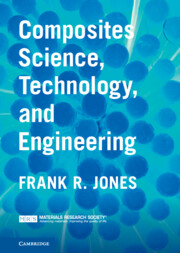Book contents
- Composites Science, Technology, and Engineering
- Composites Science, Technology, and Engineering
- Copyright page
- Contents
- Preface
- 1 Introduction
- 2 Fibres and Particulate Reinforcements
- 3 Matrices
- 4 Composites Fabrication
- 5 Mechanical Properties of Composite Materials
- 6 Mechanical Properties of Laminates
- 7 Fatigue Loading of Laminates
- 8 Environmental Effects
- 9 Joining, Repair, Self-Healing, and Recycling of Composites
- 10 Case Histories
- Index
- References
2 - Fibres and Particulate Reinforcements
Published online by Cambridge University Press: 14 April 2022
- Composites Science, Technology, and Engineering
- Composites Science, Technology, and Engineering
- Copyright page
- Contents
- Preface
- 1 Introduction
- 2 Fibres and Particulate Reinforcements
- 3 Matrices
- 4 Composites Fabrication
- 5 Mechanical Properties of Composite Materials
- 6 Mechanical Properties of Laminates
- 7 Fatigue Loading of Laminates
- 8 Environmental Effects
- 9 Joining, Repair, Self-Healing, and Recycling of Composites
- 10 Case Histories
- Index
- References
Summary
This chapter describes the synthesis of the principal fibres and provides the range of acicular reinforcing particles, nanofibres, nanotubes, and nanosheets. The properties of the most common fibres – carbon, glass, ceramics, and natural and advanced polymers – are considered. The differing grades and their structural property relationships are also discussed. Surface treatments for adhesion and compatibility are described.
- Type
- Chapter
- Information
- Composites Science, Technology, and Engineering , pp. 22 - 75Publisher: Cambridge University PressPrint publication year: 2022



